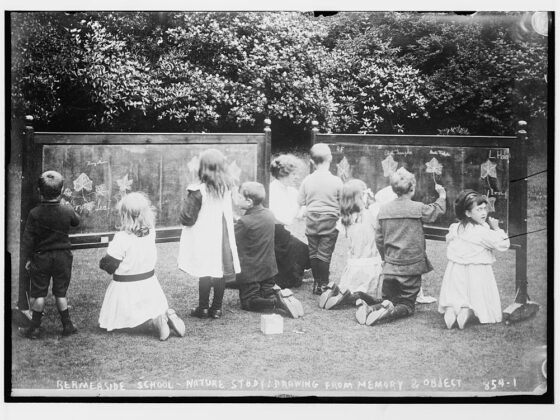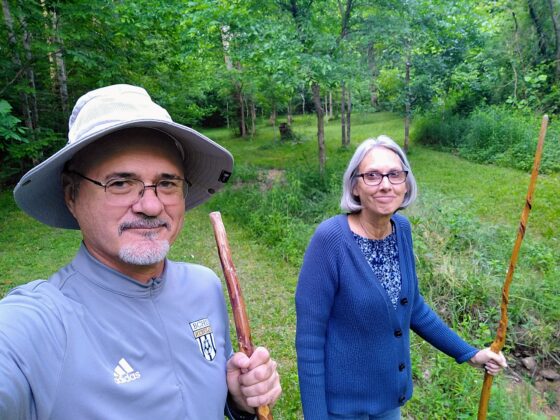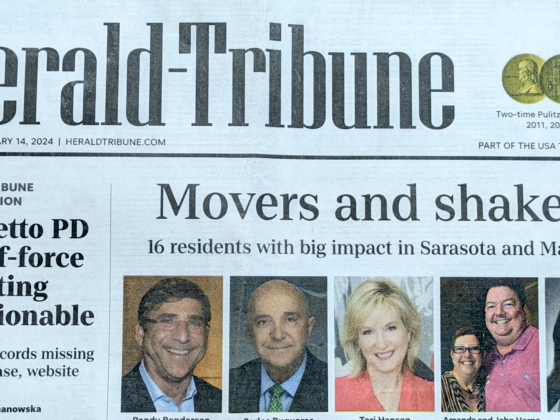Last week, in this post, I started explaining why mapping had always mattered to me—and why, obviously more importantly, I thought it was destined to have ever larger civic impact. This is the next in a planned series of posts on that theme.
Sixty years ago this spring, in Washington, D.C., a young lawyer named Newton Minow, then John F. Kennedy’s new appointee as the head of the Federal Communications Commission, gave the speech that is known to history as the “vast wasteland” address. It was about the power to inform—and misinform—that had newly arrived in the hands of the world’s television producers.
Minow said:
When television is good, nothing — not the theater, not the magazines or newspapers — nothing is better.
But when television is bad, nothing is worse.
Two weeks ago, in California, the head of a technology company and the longtime leader of a major publishing company issued a similar warning about the emergence of a new online technology with great power to inform—and to distort.
In essence they said: nothing could be better than the digital tools that are about to become available. And few things could be worse.
The two people delivering this message were Jack Dangermond, the founder and head of the well-known mapping company Esri; and Gary Knell, former head of the National Geographic Society and, before that, of National Public Radio. For the record: I am the person interviewing Dangermond and Knell in the video I’m about to present; I’m a friend of them both, Gary Knell for many years and Jack and Laura Dangermond for many decades; and the Dangermond family and Esri have been long-time partners and supporters of the work Deb Fallows and I have done to advance “geo-journalism.”
Now here is the video. It was recorded at Esri’s annual User Conference earlier this month, and it captures exactly the kind of discussion that Dangermond’s and Knell’s counterparts in social media should have been having a decade-plus ago, to imagine (and thus head off) the worst consequences of Facebook et al.
I genuinely think the whole 30-minute discussion is enlightening. But for the moment I direct your attention to the part starting around time 15:00. Both Jack Dangermond and Gary Knell say things worth noticing.
You can see this for yourself, but here is the set up:
In the preceding moments, Jack Dangermond and Gary Knell had been talking about the ways journalists—whether “professional,” amateur, ad-hoc, or otherwise—can more and more effectively use modern mapping technologies to dramatize and convey their meaning. An example from the past decade is the way urban mapping has highlighted the legacy (and ongoing effects) of race-based “redlining.” An example from the past year has been the importance of maps and dashboards in understanding the spread and consequences of Covid.
Illustrations like this, and many more, show the amplifying power-to-explain of mapping technology. But what if we’re at the dawn of an equally significant power-to-distort—to misinform, to inflame, to terrify, to incite?
What if map-based presentations of any sensitive issue—from disease-spread to rates of crime, from migration patterns to unemployment levels—mainly become tools of political agitprop? Over the past 20 years, billions of people around the world have gained the power to spread their views and fears on social media. Because of the naive belief that more loudly trumpeted expression will always be constructive, or the cynical calculation that the easiest way to keep people clicking on line is to make them angry, “social media” and “Facebook” have become shorthands for technology’s power to misinform.
As millions gain the skills of using mapping to explain (or distort), is there any reason to expect that the results will be any better? The two maps below both “explain” the results of the 2016 U.S. presidential election.
The first, county-acreage-based, makes it seem like an overwhelming mandate in one direction.

The other, adjusted for population, and with color gradations reflecting the closeness of each country’s vote, presents something that looks very different (both are these are via M.E.J. Newman):

To me, the first illustration represents mapping harnessed to a political agenda, while the second is geography used to express a complex, contradictory modern reality. The point is, they’re both maps, that make a point—and as more and more people can deploy these tools, it will matter more and more how honestly and carefully they use them. (And, to be clear, each of these two is an “honest” map, though used with different intentions. Imagine the counterparts of video “deep fakes,” actually flipping the results of counties or whole states.)
That’s what this conversation is about. I found it surprisingly moving, and important, to hear from people at the center of this technology express deep concerns about its direction—and to encourage their colleagues to stand up for the honesty, the responsibility, and the honor of their craft. Midway through the discussion, Jack Dangermond says “I want our users to be aware that they have a moral responsibility to tell the truth.” A few minutes later, near the end, Gary Knell says that the map-making community—and by extension technologists in general, and journalists, and everyone—should constitute a “new citizenry around truth.”
Please watch and think about the video. And imagine other leaders of other technologically empowered institutions talking in similar terms.



